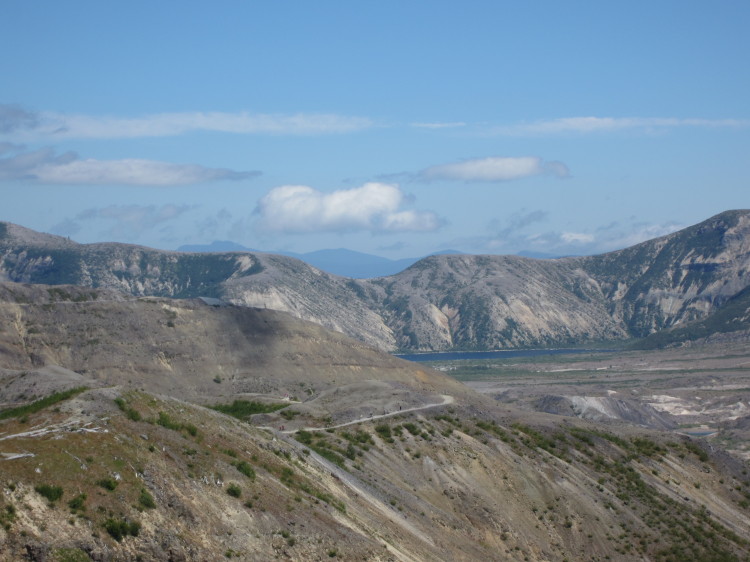 Looking north from Johnston Ridge Observatory.
Looking north from Johnston Ridge Observatory.
 Spirit Lake visible in the distance.
Spirit Lake visible in the distance.
 The Johnston Ridge Observatory is built right into the ridgeline.
The Johnston Ridge Observatory is built right into the ridgeline.

 The guts of the mountain are laid bare.
The guts of the mountain are laid bare.

The personal and professional website of Douglas Van Bossuyt
 Looking north from Johnston Ridge Observatory.
Looking north from Johnston Ridge Observatory.
 Spirit Lake visible in the distance.
Spirit Lake visible in the distance.
 The Johnston Ridge Observatory is built right into the ridgeline.
The Johnston Ridge Observatory is built right into the ridgeline.

 The guts of the mountain are laid bare.
The guts of the mountain are laid bare.
The Lowit Viewpoint provides a stunning view of Mount St. Helens and all of the destruction that flowed from her mouth in 1980.
The Toutle River cuts deeply through the debris flow.
Trees laid low by the blast wave from the mountain.
Heather found a little chipmunk friend. I believe she named him Rufus II.
The Hummocks Trail meanders through a vast expanse of debris ejected from the very core of Mount St. Helens. On that fateful day in 1980 when the mountain exploded, many tons of glacial ice and snow suddenly ended up on the bottom of many more tons of hot rock and ash. Over time, the ice and snow melted, forming distinctive hummocks. In recent years the field of hummocks has begun to revegetate. Walking through the hummocks is an interesting and pretty experience, and a stark reminder of the power of the mountain.
Little ponds dot the hummocks fields from where the ground collapsed down after the snow and ice melted underneath.